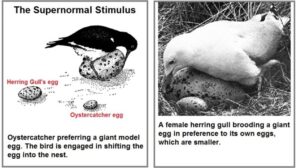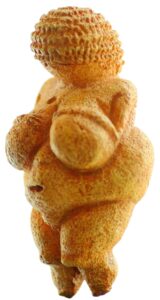Big, hot, sweet, shiny, bright, and so sexy
This week, my debut, THE GARBAGE MAN (launching 9-23-25! Preorder here (Amazon) or here (B&N)!) was honored with not one but two glowing reviews from trade publications: Publisher’s Weekly / BookLife made TGM an Editor’s Pick had this to say: “A twist-at-every-turn thriller about addiction and the power of AI.” And the grand-daddy of the review world, Kirkus (oh how I love reading Kirkus reviews!), gave the book that coveted blue “GET IT” checkmark and had this to say: “A sleek, sophisticated cyberthriller in which addiction and artificial intelligence intertwine“.
And both of these reviews reminded me of something in TGM that I have yet to talk about:
Addiction.
[Spoilers below – you’ve been warned!]
In TGM, addiction is the lifeblood of the virtual reality experience known as Resilusio. The AI that powers the Resilusio world takes highly predictive and personal data gleaned from your trash and creates experiences that suck you in and make you never, ever want to leave. That is the special sauce of Resilusio. But the trash data couldn’t do its job without the tried and true workhorse of addiction psychology:
Superstimuli.
Superstimuli are really, really, REALLY scary stuff. And, I guess, nothing new. You might have already heard about them. If you haven’t, consider yourself warned. Awareness is half the battle. Read on, and while you’re at it, slap that phone out of your kid’s hand. Slap the chips too.
“Superstimuli”, or :supernormal” stimuli are exaggerated versions of naturally occurring stimuli that elicit stronger responses than the original, evolutionarily relevant triggers. Ethologist Nikolaas Tinbergen first coined the term to describe how animals can be tricked into preferring artificial cues—like birds choosing to incubate oversized fake eggs over their real ones—because the exaggerated features more strongly activate their instincts (Tinbergen, 1951).

The scary, cartoonish huge eggs get the love: the power of stimulus-response. Source: Tinbergen, 1951
In humans, superstimuli manifest in things like hyper-processed junk food that hijacks our taste preferences with unnaturally high levels of sugar, salt, and fat, or social media platforms that exploit dopamine reward systems through infinite scrolling and constant notifications (Barrett, 2020). These feedback mechanisms exploit evolved preferences for survival-relevant signals (like calorie-dense food or social feedback) but amplify them beyond what our ancestral environment would have provided, often leading to compulsive behavior or maladaptive outcomes like … wait for it … addiction (Berridge & Robinson, 2016).

Junk food really IS mindlessly addictive: stimulus-response. Source: Saturo
Junk food actually IS mindlessly addictive. And so is social media. It’s in your head and real at the same time!
Many researchers advance the idea that today’s p*rnography is a superstimulus as well, with the associated addiction. To wit: considet the prehistoric sculpture called the Venus von Wilendorf. Venus, carved somewhere around 28,000 BCE-25,000 BCE, is maybe an early example of sexual superstimuli, note her exaggerated breasts, buttocks, and stomach.

Is she on OnlyFans? Source: Museum of Natural History, Vienna
Humans are not much evolved past the person who might enjoy looking at Miss Venus here. But sexually-suggestive super-stimuli has evolved. Today, it permits the user to access sex with an evolutionary-unbelievable amount of self-chosen, “preferential” mates, more than one might ever see in a lifetime.
These addicition psychology concepts were a huge inspiration to me in creating Resilisio. Imagine the most compelling collection of experiences, curated specifically for you. What you like, the way you like it, free from judgment, shame, or small monthly fees. Your very own symphony of superstimuli.
What could go wrong?